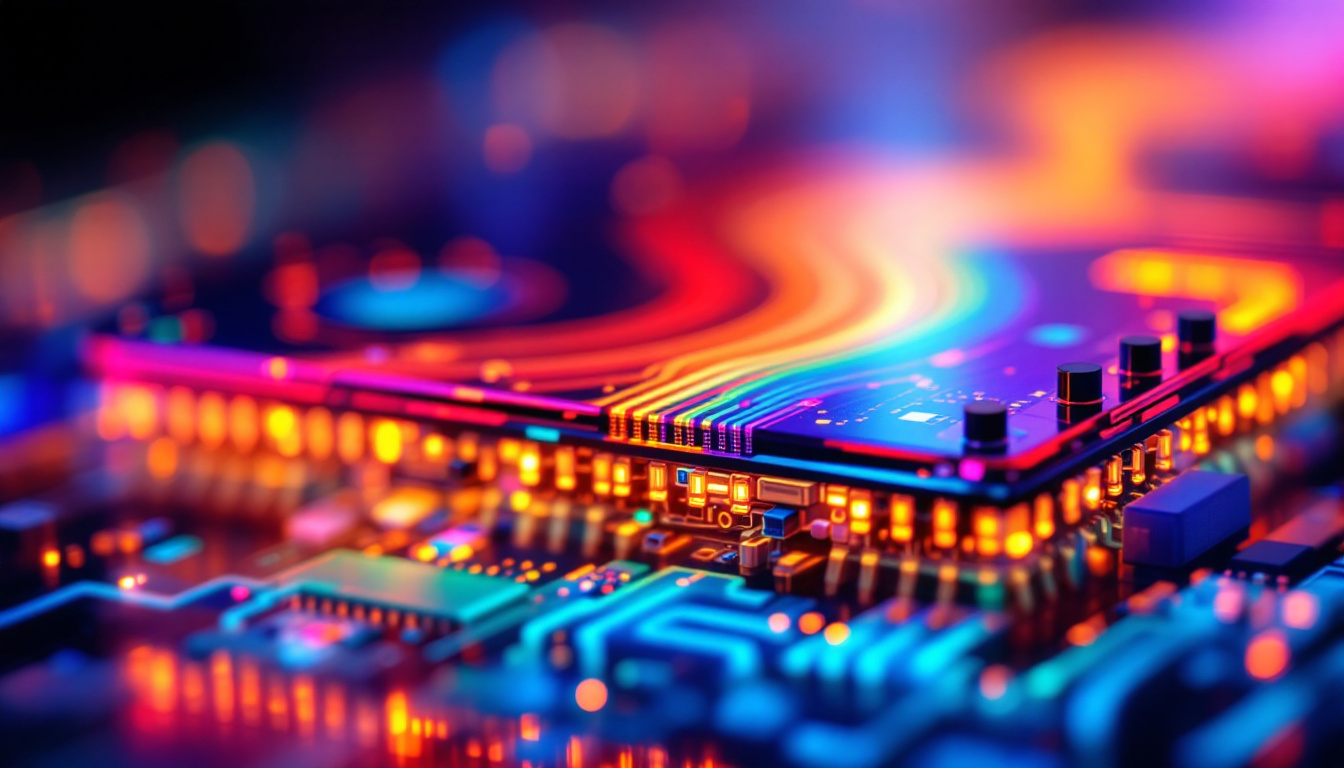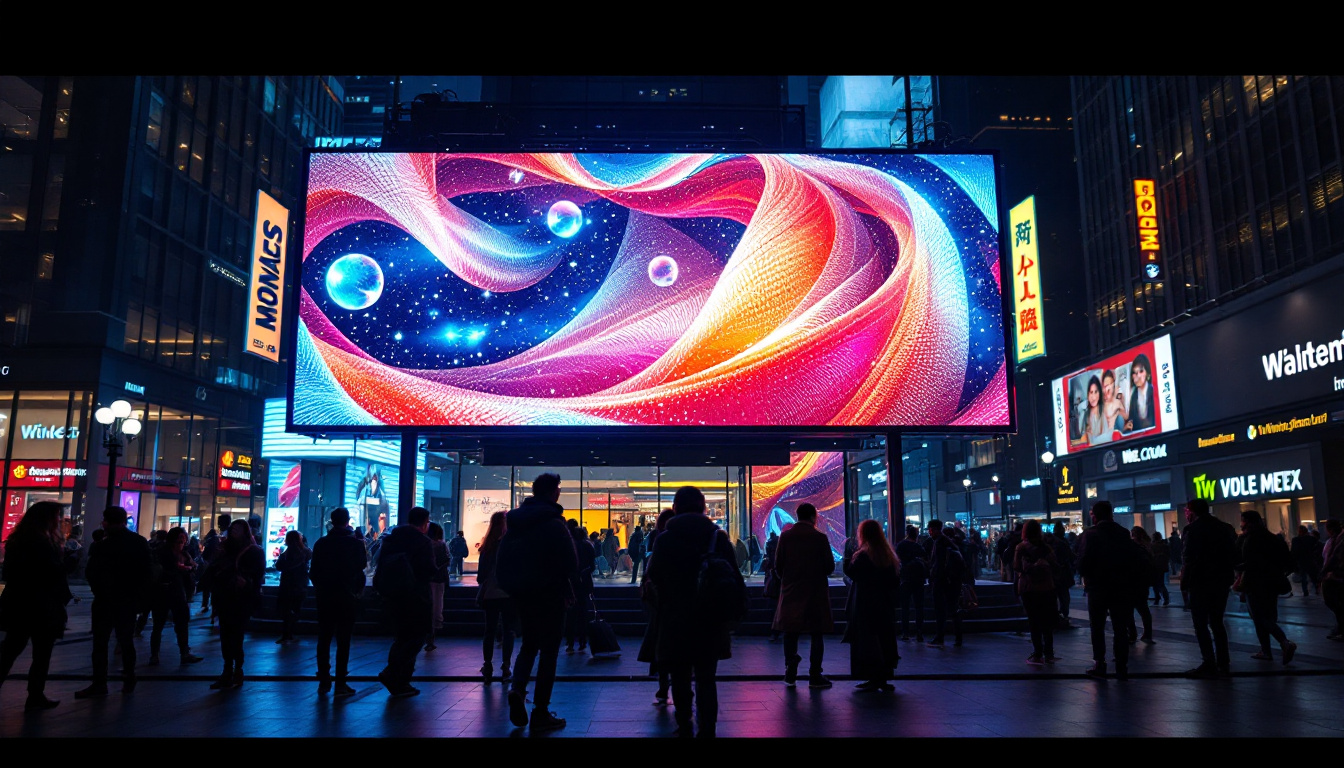In the world of modern technology, displays are an essential component of various devices, from smartphones to televisions. Among the most popular types of displays are LCD (Liquid Crystal Display) and LED (Light Emitting Diode) technologies. While both are often mentioned together, they have distinct characteristics and functionalities. This article will delve into the intricacies of LCD displays, provide a comprehensive diagram, and elucidate the relationship between LCD and LED technologies.
Understanding LCD Technology
LCD technology has revolutionized the way we view images and videos. It operates by utilizing liquid crystals that modulate light. Unlike traditional cathode ray tube (CRT) displays, LCDs are thinner, lighter, and more energy-efficient, making them the preferred choice for many electronic devices. The compact design of LCD screens allows for sleek and modern aesthetics in consumer electronics, contributing to the popularity of flat-screen televisions and portable devices like smartphones and tablets.
How LCDs Work
At the core of an LCD is a layer of liquid crystals sandwiched between two polarizing filters. When an electric current passes through the liquid crystals, they align in such a way that allows varying amounts of light to pass through, creating images. The backlight, which is typically fluorescent or LED-based, provides the necessary illumination for the display. This backlighting technology has evolved significantly, with LED backlighting offering improved brightness and color accuracy compared to older fluorescent methods, further enhancing the viewing experience.
The arrangement of the liquid crystals can change depending on the voltage applied, which in turn affects the brightness and color of the pixels on the screen. This technology allows for high-resolution displays, making it ideal for everything from computer monitors to large television screens. Additionally, advancements in LCD technology have led to innovations such as IPS (In-Plane Switching) panels, which offer wider viewing angles and better color reproduction, making them a favorite among graphic designers and gamers alike.
Components of an LCD Display
An LCD display consists of several key components that work together to produce images. These include:
- Liquid Crystal Layer: This is the heart of the LCD, where the modulation of light occurs.
- Backlight: Provides illumination, crucial for the visibility of the display.
- Polarizers: These filters help control the light entering and exiting the liquid crystal layer.
- Color Filters: Responsible for producing the full spectrum of colors by filtering the light.
Understanding these components is essential for grasping how LCD technology functions and its advantages over other display types. Moreover, the integration of these components has led to the development of various display technologies, such as TN (Twisted Nematic) and VA (Vertical Alignment) panels, each with unique characteristics suited for different applications. For instance, TN panels are known for their fast response times, making them ideal for gaming, while VA panels excel in contrast ratios, providing deeper blacks and vibrant colors for movie watching.
The Role of LED in LCD Displays
While LCD technology is significant on its own, the introduction of LED backlighting has further enhanced its capabilities. This section will explore how LED technology complements LCD displays and the benefits it brings.
LED Backlighting Explained
LED backlighting involves using light-emitting diodes to illuminate the LCD screen. This method has largely replaced the older cold cathode fluorescent lamps (CCFL) due to several advantages. LED backlighting can be categorized into two main types: edge-lit and full-array.
- Edge-Lit LED: In this configuration, LEDs are placed along the edges of the screen, which allows for a thinner profile. However, this design may lead to uneven brightness across the display.
- Full-Array LED: This setup uses a grid of LEDs behind the entire screen, providing more uniform brightness and better contrast ratios. It often includes local dimming features that enhance black levels.
LED backlighting not only improves the brightness and color accuracy of LCD displays but also contributes to energy efficiency, making it a popular choice in modern devices. Moreover, the longevity of LED lights means that screens can maintain their performance over time, reducing the need for frequent replacements and repairs. This durability is particularly advantageous for consumers who rely on their devices for extended periods, such as gamers and professionals who use high-resolution displays for graphic design or video editing.
Advantages of LED-Enhanced LCDs
The combination of LCD and LED technologies offers several advantages that have made them the standard in the display market:
- Improved Color Accuracy: LED backlighting allows for a wider color gamut, resulting in more vibrant and accurate colors.
- Energy Efficiency: LED displays consume less power compared to traditional CCFL backlit LCDs, which is beneficial for both the environment and user costs.
- Thinner Design: The slim profile of LED backlit LCDs makes them ideal for modern aesthetics, allowing for sleek and stylish devices.
These advantages have contributed to the widespread adoption of LED-enhanced LCD displays in various applications. In addition to consumer electronics, such as televisions and computer monitors, LED backlit LCD technology has found its way into public displays, signage, and even automotive displays. The versatility of this technology allows for dynamic content presentation in retail environments and informative displays in transportation hubs, showcasing its adaptability across different industries. Furthermore, as technology continues to evolve, innovations such as quantum dot enhancement layers are being integrated with LED backlighting to push the boundaries of color performance even further, promising an exciting future for display technologies.
LCD Display Diagram
To better understand how LCD displays function, a diagram can be immensely helpful. Below is a simplified illustration of an LCD display with LED backlighting:

The diagram highlights the key components, including the liquid crystal layer, backlight, polarizers, and color filters. Each part plays a crucial role in the overall functionality of the display, contributing to the final image quality.
The liquid crystal layer is particularly fascinating, as it consists of molecules that can change their alignment when an electric current is applied. This property allows the display to control light passage, creating images by selectively blocking or allowing light to pass through. The backlight, often composed of LEDs, provides illumination, ensuring that the images are visible even in low-light conditions. This combination of liquid crystals and backlighting technology has revolutionized the way we interact with screens, making them thinner and more energy-efficient.
Additionally, the polarizers are essential for managing light waves. They filter the light entering and exiting the liquid crystal layer, ensuring that only the desired wavelengths reach the viewer’s eyes. Color filters then add another layer of sophistication by allowing only specific colors to pass through, which is crucial for producing vibrant images. The interplay between these components not only enhances visual clarity but also contributes to the overall performance of the display, making LCD technology a staple in everything from smartphones to large-screen televisions.
Comparing LCD and LED Technologies
While LCD and LED are often used interchangeably, it is essential to distinguish between them. LCD refers specifically to the technology that uses liquid crystals, while LED pertains to the method of backlighting used in some LCD displays. Understanding this distinction can help consumers make informed choices when purchasing devices.
Key Differences
Here are some of the primary differences between LCD and LED technologies:
- Backlighting: LCDs can use various backlighting methods, including CCFL and LED, whereas LED displays specifically utilize LEDs for illumination.
- Brightness: LED backlit displays generally offer higher brightness levels compared to traditional LCDs, enhancing visibility in various lighting conditions.
- Color Range: LED technology allows for a broader color spectrum, resulting in richer and more accurate colors.
These differences highlight the advancements in display technology and the benefits of LED backlighting in enhancing LCD performance.
Common Applications of LCD and LED Displays
Both LCD and LED displays are utilized in a wide range of applications, reflecting their versatility and effectiveness:
- Televisions: Most modern televisions are equipped with LED backlit LCD screens, providing high-quality viewing experiences.
- Monitors: Computer monitors often use LCD technology, with many featuring LED backlighting for improved performance.
- Smartphones and Tablets: The majority of mobile devices employ LCD or LED technology, ensuring crisp visuals and vibrant colors.
The adaptability of these technologies has made them integral to the consumer electronics industry.
Future of LCD and LED Technologies
As technology continues to evolve, so do the possibilities for LCD and LED displays. Innovations in materials, manufacturing processes, and design are paving the way for even more advanced display technologies.
Emerging Trends
Several emerging trends are shaping the future of LCD and LED technologies:
- OLED Displays: Organic Light Emitting Diode (OLED) technology is gaining traction as it offers superior contrast ratios and color accuracy compared to traditional LCDs.
- MicroLED Technology: This new technology promises to combine the best features of LCD and OLED, providing high brightness, color accuracy, and energy efficiency.
- Flexible Displays: Advances in display materials are leading to the development of flexible and foldable screens, which could revolutionize device design.
These trends indicate a dynamic future for display technologies, with continuous improvements enhancing user experiences across various devices.
Conclusion
In summary, LCD and LED technologies play a pivotal role in modern displays, offering a blend of efficiency, performance, and versatility. Understanding the mechanics behind these technologies, along with their advantages and applications, is essential for anyone looking to navigate the world of electronic displays. As advancements continue, the future promises even more exciting developments that will shape how we interact with visual media.
With the ongoing evolution of display technology, consumers can expect to see even more innovative solutions that enhance the viewing experience, making it an exciting time for both manufacturers and users alike.
Discover Cutting-Edge LED Display Solutions
As you’ve seen, the synergy between LCD and LED technologies is reshaping our visual experiences. If you’re inspired to elevate your brand’s presence with the latest in display innovation, look no further than LumenMatrix. Specializing in a wide array of LED display modules, from vibrant Indoor and Outdoor LED Walls to dynamic Vehicle and Sports Displays, LumenMatrix is at the forefront of creating immersive environments that captivate and engage. Experience the future of visual communication with our Transparent, Floor, Custom, and All-in-One LED solutions designed to make your message resonate with clarity and impact. Check out LumenMatrix LED Display Solutions and join the revolution in digital signage excellence.































